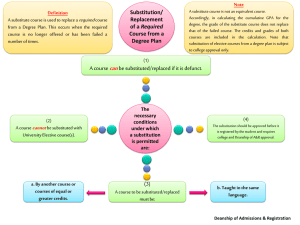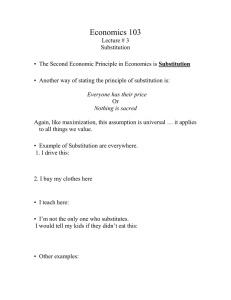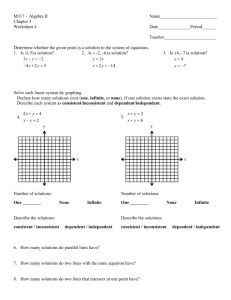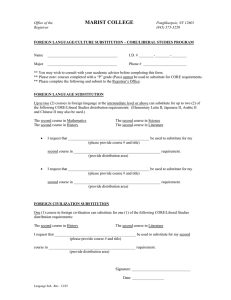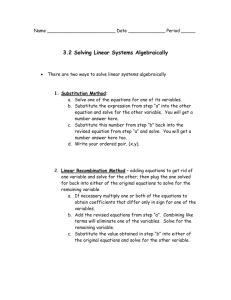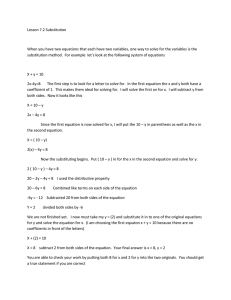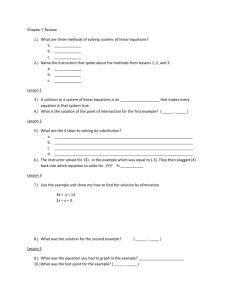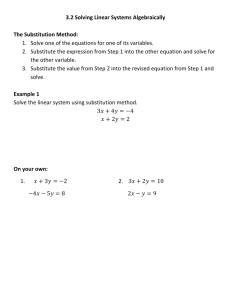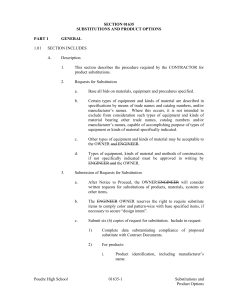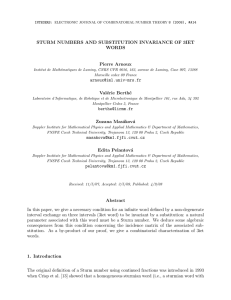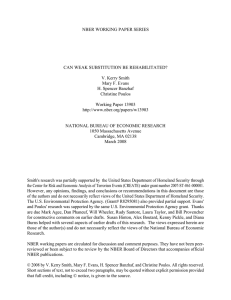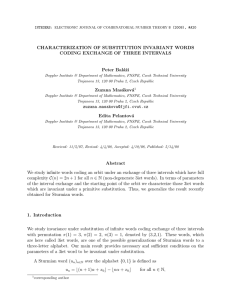Solving Systems of Equations Using Substitution
advertisement
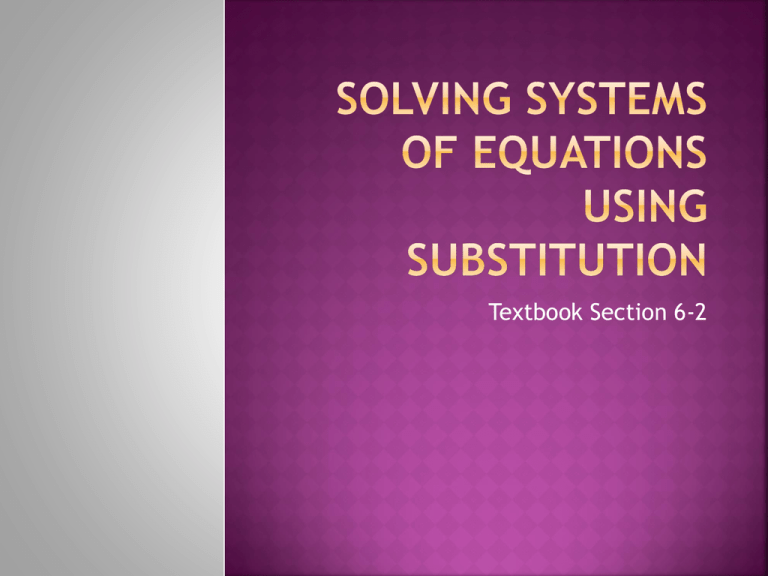
Textbook Section 6-2 Which inequality does not have the same 2 solution as − 𝑦 > 4? 3 A) 12 < −2𝑦 B) 𝑦 2 C) − 𝑦> D) −3𝑦 > 18 < −12 3 4 9 2 Students can solve a system of equations using substitution. Students can classify systems as consistent, inconsistent, dependent, or independent using algebraic methods. What does the word substitute mean? Provide examples. In sports, coaches often substitute one player for another who plays the same position. In school, when a teacher is absent, a substitute teacher takes his/her place for the day. 1) 2) 3) 4) 5) Solve for either variable, if necessary. Substitute the resulting expression into the other equation. Solve that equation to get the value of the first variable. Substitute that value into one of the original equations and solve for the second variable. Write the values from steps 3 and 4 as an ordered pair (x, y). Check your answer. Solve the following systems using substitution. State the number of solutions (no solution, one solution, or infinite solutions) and tell whether the system is consistent, inconsistent, dependent, or independent. Solve the system using substitution. 𝑦 = 2𝑥 𝑦 =𝑥+5 One Solution (5, 10) Consistent Independent Solve the system using substitution. 2𝑥 + 𝑦 = 5 𝑦 =𝑥−4 One Solution (3, -1) Consistent Independent Solve the system using substitution. 𝑥 = 5𝑦 + 10 2𝑥 − 10𝑦 = 20 Infinite Solutions Consistent Dependent Solve the system using substitution. −5𝑦 − 𝑥 = −4 3𝑥 + 15𝑦 = −1 No Solution Inconsistent When solving the system, if the end result is a false (for example, 2 = -5), the answer is no solution. If the end result is a statement that is always true (for example, 3 = 3, or x = x), the system has infinite solutions. If you can solve for the variables, there is one solution (for example, x = 3, y = 1).
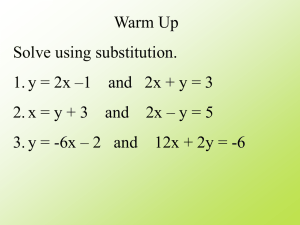
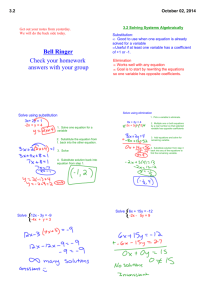
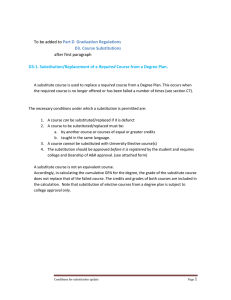
![[Resolution Number AC/2014-15/4/14 dated 24 March 2015] To be added to](http://s2.studylib.net/store/data/012253449_1-ba1d1d73a554633c13e9e59e05a24c9a-300x300.png)
